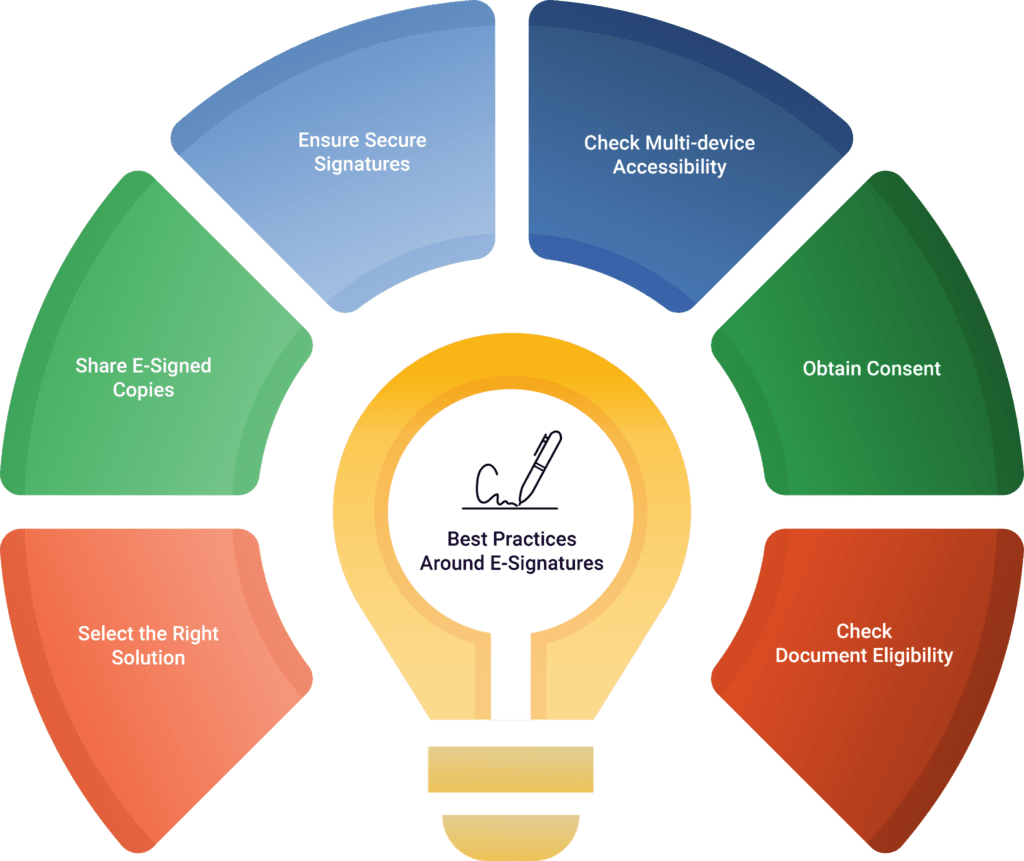The pandemic has really accelerated digital applications, including e-signatures, due to its enablement of distributed processes and personnel. But the practical use of executing documents electronically is fairly new to many organizations. For many, it’s simply a comfort level with a non-physical agreement, for others, it’s simply the anxiety associated with a new process. So, it’s important to get comfortable with change by employing best practices that ensure a smooth transition from physical processes while also ensuring legal and regulatory issues are addressed. This is particularly true for the Patent Assignment Process.
In this article, we’ll cover five key topics:
- The current state of patent assignments and why many organizations are moving away from paper-based processes.
- U.S. ESIGN Act and the best practices around e-signatures.
- Key points to consider before using electronic signatures for patent assignments.
- Realizing our vision of a seamless assignment experience with e-sign platform integration.
- Closing remarks highlighting why the adoption of e-signatures might be gradual and what organizations can do to accelerate it.
The Current State of Patent Assignments and Why It’s Important to Go Paperless
In the U.S., inventors are required to assign ownership of patent rights to their organizations, for which they sign assignment documents that can be recorded at the USPTO. These documents are often prepared early in the pendency of patent applications and can control ownership rights of the current applications, any later-filed (child) applications, and even international applications.
While there are no specific statistics or reports to track U.S. patent assignments, the number of patent filings can be regarded as an indirect indicator*. For instance, an increase in the number of utility patent applications (all origins) from 597,141 in 2018 to 621,453 in 20191 is indicative of an almost proportional increase in the number of patent assignments.
For organizations with sizable patent portfolios, a rise in the number of paper-based assignments can present some pressing challenges, the most common ones of which are increased inefficiencies, slow turnaround time, and increased errors. Moving from paper-based to digital assignments using electronic signatures can enable organizations to navigate these challenges without significantly impacting business operations.
*Inventors/individual assignees eventually transfer the patent rights to their organizations.
E-Signatures and Best Practices around Them

Best Practices Around E-signatures
The U.S. government passed the ESIGN Act in 2000 to facilitate the adoption of e-signatures for specific documents in all locations where federal law is applicable. The Act2 defines e-signature as an electronic sound, symbol, or process attached to or logically associated with a contract or other record and executed or adopted by a person with the intent to sign the record. Here are some of the best practices that organizations must implement to ensure a seamless e-signing experience:
- Ensure Secure Signatures: E-signatures must create a tamper-proof seal once they have been recorded in a document, i.e., the e-signed document should be invalidated when unauthorized changes are attempted by unknown parties. In addition to this, a signature audit trail should be created for every e-signed record, allowing organizations to verify signed records in a single click.
- Check Multi-device Accessibility: Organizations are increasingly using multiple electronic devices such as mobile, tablets, and laptops for documenting their IP and business processes. Digital signatures required for these documents should be accessible on most if not all of these devices.
- Obtain Consent: It’s necessary to get consent from all signers. To this end, organizations can include in the document being signed a clause that states all parties agree to carry out the transaction electronically.
- Check Document Eligibility: Documents or transactions that are generally eligible for e-signatures include but are not limited to non-disclosure agreements (NDAs), the Technology sector, Life Sciences, and Software Licensing3. Other documents that can be signed digitally but must be dealt with caution are related to procurement, corporate resolutions, government filings, etc.
- Select the Right Solution: Identifying and deploying the right e-signature software solution is extremely important. Organizations can choose the best software for their business operations by comparing prices, the number of documents that can be e-signed, and advanced capabilities such as scalability, integration with other platforms, and mobile compatibility.
- Share E-signed Copies: Whether a transaction is simple or complex, it’s a good practice to share copies of the e-signed document(s) with all involved parties. This can be done either via emails or using the e-signature software.
Key Points to Consider Before Using E-Signatures for Patent Assignments
Using electronic signatures for patent documents such as assignments allows organizations to sign documents on electronic devices, reduces risks by ensuring that correct information is filled in patent documents, helps save costs by reducing spend on stationery items and postage/courier services, enhances security by making documents unforgeable, and increases efficiency and time savings.
Notwithstanding these benefits, it’s critical to confirm whether the concerned PTO accepts e-signatures for patent documents. For instance, the USPTO accepts electronic signatures for documents that are submitted electronically only via the EFS-web platform or fax.
It’s also important to bear these points in mind: (i) electronically signed documents should be valid under both federal and state law (ii) the “intent to sign” (15 U.S.C. § 7006) should be considered while evaluating the validity and enforceability of the e-signed assignments. For validating the assignments even further, they can be worded in a way that suggests all involved parties agree to voluntarily use e-signatures.
Note: The most appropriate e-signature for any document filed with the USPTO is “S-signature“, where signers insert their name between two forward slashes.
Symphony’s Integration with E-Signature Platform for a Seamless Assignment Experience
At MaxVal, we understand that our clients and prospects are continually seeking software solutions to automate, manage and simplify their patent processes. Bearing their requirements and our commitment to providing the best solutions and services in mind, we have partnered with DocuSign, one of the most reliable and globally trusted services for e-signatures and approvals.
The partnership enables us to integrate DocuSign’s e-signature platform with Symphony to provide clients with a seamless experience while signing IP documents such as patent assignments. Clients are also saved from getting embroiled in legal disputes as DocuSign’s e-signatures are compliant with U.S. ESIGN Act, UETA, and the EU eIDAS Regulation. But that’s not all, the platform automatically generates and stores an audit trail for every agreement/transaction, offers the option to use templates to reduce duplicate work and save time, digitally verify the signing party’s identity, send SMS alerts to clients, and sign and send documents on the move from web-based or mobile applications.
Final Thoughts
Given the critical nature of the IP industry and heavy reliance on manual methods, the adoption of e-signatures is expected to be gradual. But considering the benefits of e-signatures, the sooner the organizations start implementing them, the faster they will achieve the material savings and efficiencies mentioned above. Seeking credible solution providers who offer e-signature as a standalone solution or as a platform that can be integrated with an IP solution can be a good starting point for any organization looking to digitize its IP processes.
Footnotes:




